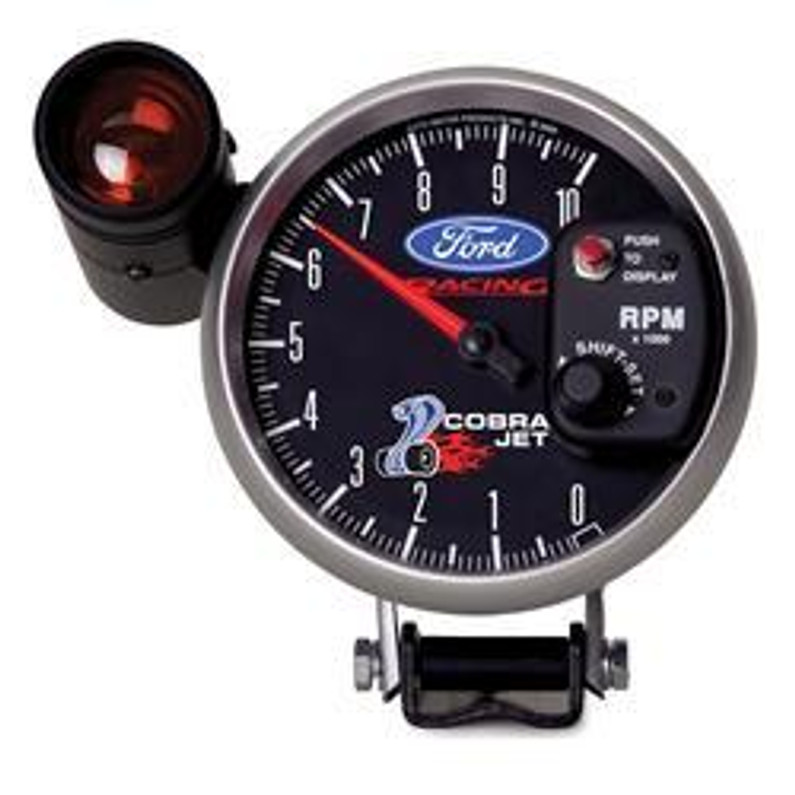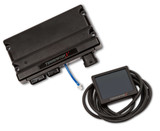Gauge Upgrades for Your Ford Mustang

It's often the last 10% of a build that's the hardest: once you've got everything together, you need to be able to test and tune your Mustang to get the best performance. The right gauges can help by letting you monitor engine parameters that are outside the scope of the stock gauges and can even help you keep your eyes on the road.
Communicating with Your Mustang
To choose the proper gauges for a Ford Mustang and set them up correctly, you need to know how they will get information from your car. This might be directly from the car's diagnostic system or the gauge may need to tap directly into engine components.
Starting in 1986, Mustangs used the OBD I standard, which only handles a few emissions-related systems. If you're running an OBD I electrical system in a Fox or early SN95 Mustang with a small block, or you have a carburetor or throttle body injection system that eliminates the ECU, any gauges will need to be able to interact directly with the vehicle's wiring.
OBD II uses a standard connector, located below the driver's side dash, that carries information including error codes and most engine operating information including RPM. This has been used in V8 Mustangs since 1996 and V6 Mustangs since 1994. Early versions use Ford's SAE J1850 PWM protocol, while 2005 and later models use the CAN protocol. If you have a fuel injected V6, Modular V8, Coyote or Ecoboost engine, your car should be equipped with OBD II, whether the motor was installed at the factory or you swapped the motor into your car.
Wide Band Oxygen Sensor
Even if you're running a carbureted motor with no emissions system, this type of oxygen sensor is indispensable when tuning your new build.
Unlike stock O2 sensors, which simply tells the ECU if the air/fuel mixture in the exhaust is within specifications, a wide band sensor can provide an accurate reading for a wide range of conditions, letting you monitor how much fuel is being burnt while the engine is operating. This lets you tune the carburetor or EFI system to ensure the engine isn't running too rich or lean, and is especially useful for more radical builds using forced induction or high flow heads where fuel demands are far different from a stock engine.
To install this sensor, a new threaded hole needs to be added to the exhaust, while the narrowband sensor need to be kept for the emissions system.
Tachometers and Shift Lights
If you're running solid lifters, it's not hard to get to the 7,000 RPM limit of the stock tach used in older vehicles, and if you're racing, the last thing you want to do is move your eyes away from the road to check the stock gauges. An aftermarket tachometer can be mounted in a place that gives you a clear view while still keeping an eye on the road.
In their stock form, Auto Meter's tachometers are designed to get a reading off the ignition system, calculating the engine speed by how often the spark plugs fire. To work with distrubutorless systems, these need an adapter to read off of an engine sensor to get this information. In either case, the tach needs to be set for the number of cylinders the engine has to calculate RPM.
The Sniper stand-alone light can be blended into the interior for a stock look, but it needs to read off of an OBD II connector, so it's not compatible with small block Mustangs.
Mechanical Fuel Pressure Gauge
Kirban's mechanical fuel pressure gauge attaches directly to the fuel pressure service port without removing the release valve, letting you check the pressure as soon as you open the hood. This can help to quickly diagnose injector and pump problems and is especially handy for supercharged cars moving large volumes of fuel. It fits 5.0 and 4.6 liter Mustangs up to 1998.
ECU Tuners and Data Recorders
These devices need to monitor engine components to work, so most of them come with or have the option of using displays, although the display may be limited to numbers instead of gauges. This includes Holley's self-tuning kit for their Sniper EFI, their EFI digital dash logger, SCT's LivewireTS Plus and EFI-Systems' EF-FLASHACQ data recorder. Holley even includes a wide band O2 sensor with their Sniper kit, putting all the information you need on one display. In many cases, these kits can eliminate the need for extra gauges.
Get the Tools You Need to Tune Your Mustang
For over 30 years, Anderson Ford Motorsport has helped owners build Mustangs powered by everything from carbureted small blocks to transplanted Coyotes. This lets us select gauges that will deliver high accuracy so you can get the information you need to keep your car running at its best.
Recent Posts
-
Bringing the Fox Body Mustang into the 21st Century with Holley Terminator X
Anderson Ford Motorsport has been in the Fox Mustang performance industry since 1989. One of the bi …22nd Oct 2021 -
Roush Supercharger install on a 2019 Ford Mustang
Check out this 2019 Ford Mustang before and after we installed a Roush Supercharger. …21st Feb 2020 -
All Blower Installations are not Equal.
Why Should You Choose a Company to Install Your Blower That Has a Dyno Facility In-House?Are all de …24th Jan 2020



